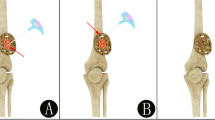Abstract.
The purpose of this study was to evaluate the feasibility of MRI-guided bone biopsy with optical instrument tracking and evaluate advantage of combined fine-needle aspiration (FNA) with trephine biopsy. Twenty trephine bone biopsies and 13 FNAs were performed under MRI and CT guidance in 14 patients. Informed consent was obtained from all patients. The evaluation of diagnostic accuracy was achieved by comparing the histopathological and cytological diagnosis with current or final diagnosis made during 6-month clinical follow-up. A 0.23-T open MRI scanner with interventional tools (Outlook Proview, Marconi Medical Systems, Cleveland, Ohio) was used. A surface coil was used. For trephine biopsy MRI-compatible bone biopsy set (Daum medical, Schwerin, Germany) was used. The FNA was performed with MRI compatible 20-G needle (Cook, Bloomington, Ind.). The diagnostic accuracy of MRI-guided trephine biopsy was 95%. The FNA sample diagnosis concurred with the histological in 54%. Our results show that MRI guidance in bone biopsies is accurate and safe. It is comparable to CT-guided or open biopsy. The role of combined FNA with bone biopsies remains controversial.
Similar content being viewed by others
Author information
Authors and Affiliations
Additional information
Electronic Publication
Rights and permissions
About this article
Cite this article
Blanco Sequeiros, R., Klemola, R., Ojala, R. et al. MRI-guided trephine biopsy and fine-needle aspiration in the diagnosis of bone lesions in low-field (0.23 T) MRI system using optical instrument tracking. Eur Radiol 12, 830–835 (2002). https://doi.org/10.1007/s003300101104
Received:
Revised:
Accepted:
Published:
Issue Date:
DOI: https://doi.org/10.1007/s003300101104




